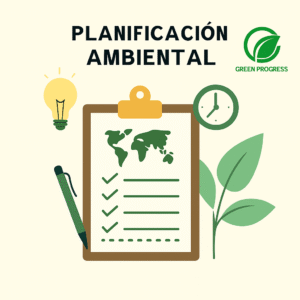Introduction to Environmental Monitoring: What It Is and Why It Matters
In an era defined by climate change, industrial growth, and rapid urbanization, environmental monitoring has emerged as a foundational tool for preserving our planet. But what does it actually mean?
Environmental monitoring refers to the systematic collection and analysis of data about environmental conditions whether in the air, water, soil, or ecosystems to assess impacts, ensure compliance with regulations, and inform decision-making. It plays a critical role in both public policy and private sector sustainability strategies.
From identifying pollution sources to measuring ecosystem health, environmental monitoring serves as the eyes and ears of environmental stewardship. It not only helps governments enforce environmental laws but also aids companies in reducing risks, preventing sanctions, and building public trust.
In short, monitoring is not optional it’s essential.
Types of Environmental Monitoring:
To truly understand our environmental reality, multiple components must be monitored. Each medium presents unique challenges and requires specific indicators and methods.
1. Air Quality Monitoring
This involves tracking pollutants like PM2.5, PM10, NOx, SO₂, CO, and O₃. These affect not only human health but also climate dynamics. Regulatory bodies like the EPA in the U.S. have clear thresholds for each.
2. Water Quality Monitoring
Monitoring includes parameters such as pH, dissolved oxygen (DO), turbidity, nitrates, phosphates, heavy metals, and biological indicators like E. coli. Surface water, groundwater, and effluents from industries must all be evaluated.
3. Soil Monitoring
Soils are checked for contamination from pesticides, hydrocarbons, and heavy metals. This is critical in agricultural regions and near mining or industrial zones.
4. Biodiversity and Ecosystem Monitoring
Measuring changes in species composition, population health, and vegetation cover is essential to assess ecosystem balance and resilience. Remote sensing and field observations are typically combined.
5. Noise Monitoring
Urban noise, industrial operations, and traffic all contribute to environmental noise pollution. Decibel meters and real-time monitoring stations are used to stay within legal limits.
6. Waste and Residuals Monitoring
Both solid and hazardous waste require tracking. Parameters include volume, composition, leachates, and location-based impacts (e.g., landfill emissions).
Key Components of an Environmental Monitoring Plan
A well-structured monitoring program ensures consistency, relevance, and legal compliance. Based on global best practices, these are its key components:
- Baseline Assessment: Establishing pre-project environmental conditions
- Objective Definition: Clarifying what to monitor and why
- Parameter Selection: Choosing physical, chemical, and biological indicators
- Sampling Strategy: Determining locations, frequency, and methods
- Data Management: Standardizing data collection, validation, and storage
- Reporting: Timely analysis and dissemination of findings
- Corrective Actions: Enabling feedback loops and responsive measures
Monitoring plans are living documents they evolve with new data, policies, or technologies.
Indicators and Metrics: Parameters, Frequency, Quality & Bioindicators
The relevance of a monitoring program depends on the quality and accuracy of its metrics. Here are some critical aspects:
- Physical parameters: Temperature, turbidity, flow rates
- Chemical parameters: pH, nutrient levels, contaminants
- Biological indicators: Species diversity, microbial presence
- Temporal aspects: Some require hourly tracking (e.g., air), others monthly (e.g., water)
- Quality control: Calibration of instruments, duplicate sampling, QA/QC protocols
Bioindicators, such as lichens (air) or benthic macroinvertebrates (water), offer early warning signs of ecosystem stress. They are often more reliable than lab data.
Tools and Technologies Used in Environmental Monitoring
Modern monitoring relies on an evolving toolbox:
- IoT and Smart Sensors: Real-time data transmission from remote sites
- Drones and UAVs: For aerial surveillance of forests, coasts, and emissions
- Satellite Imagery: Remote sensing to detect land cover changes or urban heat islands
- AI and Big Data Analytics: For predictive modeling and anomaly detection
- Mobile Apps: Citizen science platforms for community-based monitoring
- LIMS Systems: For laboratory data tracking and compliance documentation
Technology enhances both scope and precision while reducing human error.
Common Challenges in Implementation & Best Practices
Even well-designed programs face obstacles:
- Budget limitations: Especially in developing nations
- Data overload: Poorly managed data can overwhelm instead of informing
- Technical expertise: Skilled personnel are needed for calibration, QA/QC, and interpretation
- Community resistance: In cases of poorly communicated goals or perceived surveillance
- Instrument failures: Require contingency protocols and redundancies
Regulatory Compliance and International Standards (ISO-14000, etc.)
Environmental monitoring is not only good practice it’s often a legal obligation. Key international standards include:
- ISO 14001: Environmental management systems (EMS)
- EPA Guidelines (U.S.): Air and water monitoring protocols
- European Union Directives: Including the Water Framework Directive
- UNECE Environmental Monitoring Frameworks: For transboundary cooperation
Failure to monitor can result in penalties, lawsuits, or reputational damage. Certification under ISO standards can also offer competitive advantages.
Benefits of Environmental Monitoring
The investment in monitoring delivers wide-ranging benefits:
- Regulatory compliance: Avoiding legal and financial penalties
- Reputational gain: Transparency boosts stakeholder trust
- Risk management: Early detection prevents disasters
- Operational efficiency: Optimization based on real-time feedback
- Sustainability goals: Measurable progress toward ESG targets
- Policy-making: Data-driven decisions are more robust and defensible
In sectors like mining, energy, agriculture, and manufacturing, monitoring is now a key pillar of long-term viability.
Case Applications:
1. Community-Based Monitoring (CBM)
Involves citizens gathering data in collaboration with researchers or NGOs. For example, locals in the Amazon basin track river pollution using simple test kits and smartphone apps.
2. Industrial Monitoring
Refineries, mines, and factories monitor emissions, effluents, and noise to maintain compliance and reduce risk. This often includes third-party audits and sensor networks.
3. Governmental Monitoring
Agencies like the U.S. EPA or Canada’s Environment and Climate Change Ministry run national-level air and water monitoring systems, including public dashboards and policy inputs.
Each of these actors plays a complementary role in building a resilient monitoring ecosystem.
Designing an Effective Environmental Monitoring Program
A well-structured environmental monitoring program is more than data collection it’s a commitment to transparency, accountability, and sustainability. Whether you’re a policy-maker, an engineer, a business owner, or a citizen, your role matters.
To create a truly impactful monitoring system:
- Define clear objectives
- Choose appropriate indicators
- Leverage technology wisely
- Engage stakeholders throughout the process
- Adapt based on new data and evolving conditions
Environmental monitoring is not just a tool it’s a compass guiding us toward a more resilient and sustainable future.









